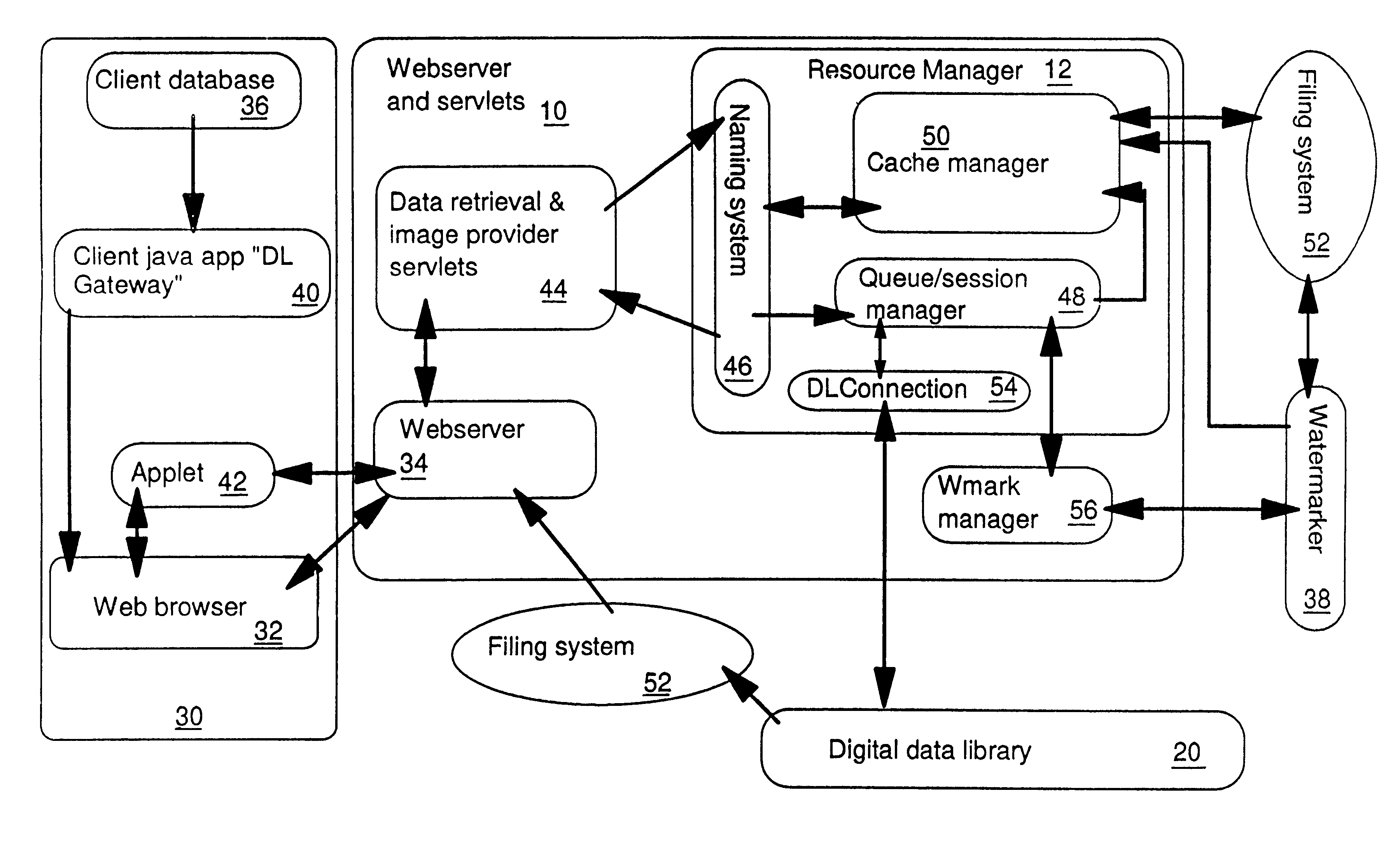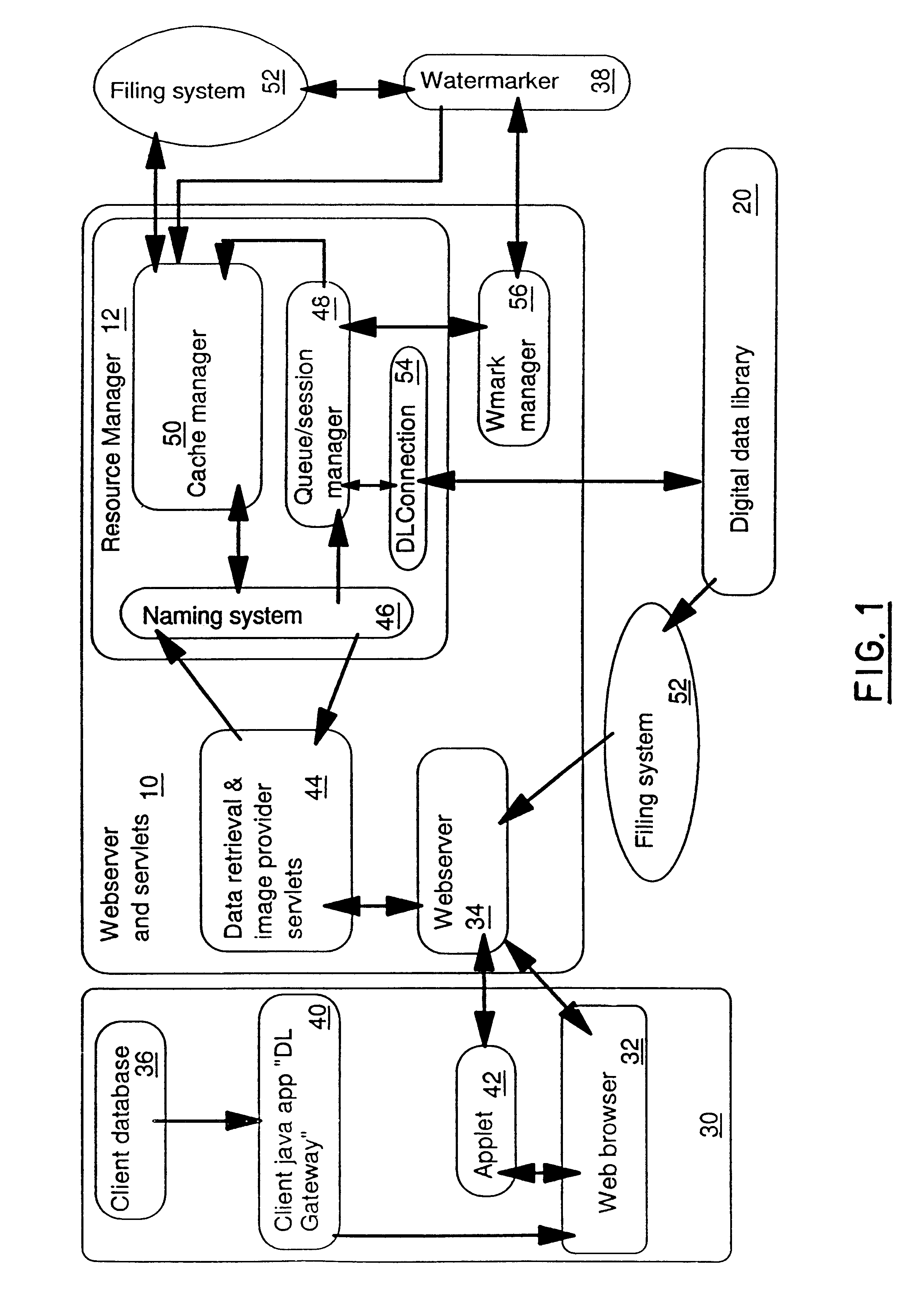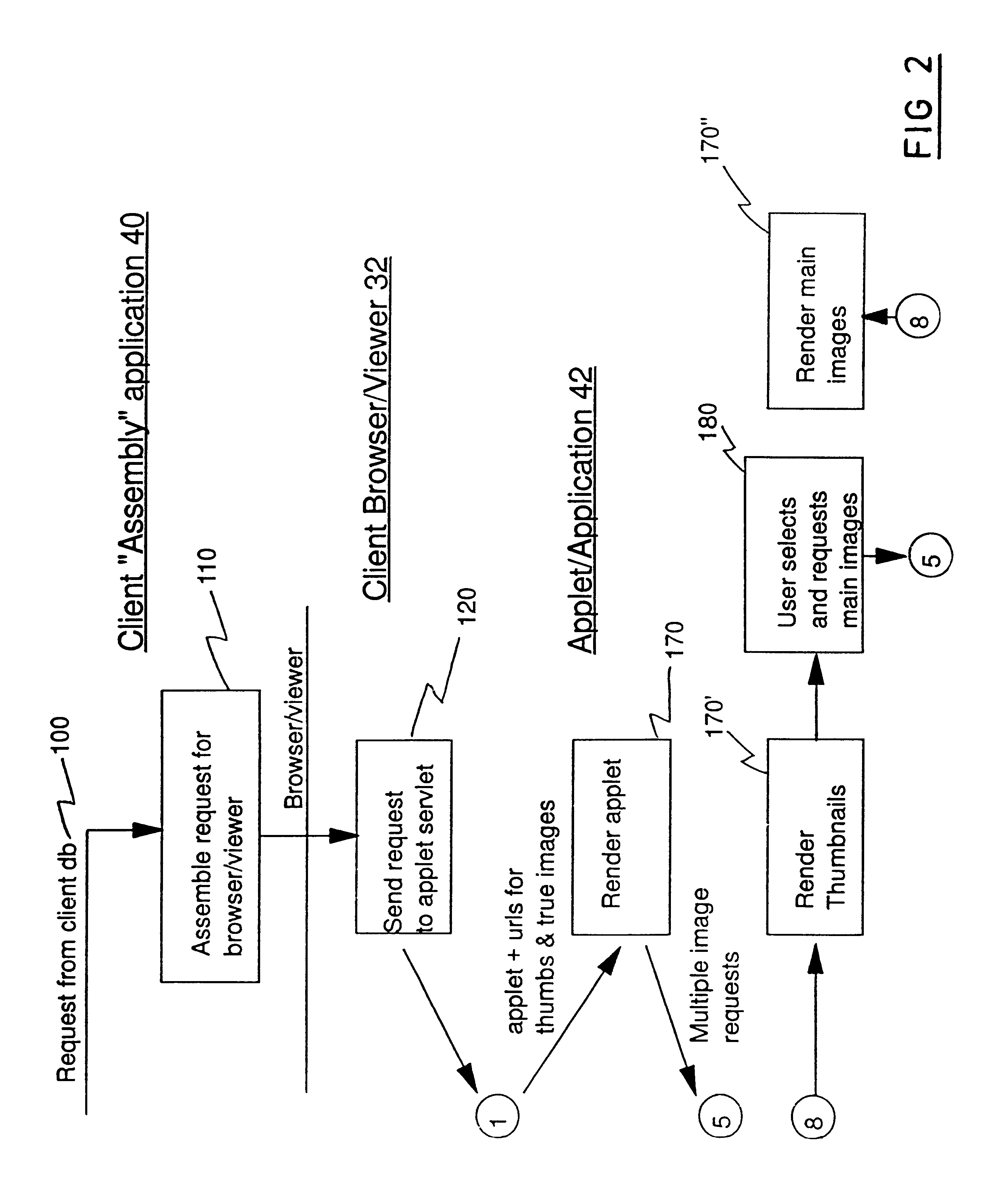Handling processor-intensive operations in a data processing system
a data processing system and processor technology, applied in the direction of program control, multi-programming arrangement, instruments, etc., can solve the problems of time delay that an end user can experience, the possibility of object retrieval delay, and the opportunity for malicious parties to replace the images on the server with forgeries, so as to avoid the reduction of overall throughput, adversely affecting processing throughput, and the effect of user tim
- Summary
- Abstract
- Description
- Claims
- Application Information
AI Technical Summary
Benefits of technology
Problems solved by technology
Method used
Image
Examples
Embodiment Construction
A client-server distributed data retrieval system implementing the present invention in accordance with an embodiment of the invention is shown in FIG. 1. A data retrieval system 10 comprising data retrieval management software installed on a server computer is connected for accessing stored objects in a digital data repository 20. As is known in the art, the repository may be provided by disk storage which is peripheral to the server computer of the data retrieval system, or which is associated with another server computer, or a digital image library may be distributed across a number of storage systems. The data retrieval system may be connected within a distributed network for access to a plurality of libraries or repositories.
The data retrieval system 10 is connected to one or more client systems 30, from which end user requests for library access may be received. The data retrieval system 10 includes a resource manager 12 which is described in detail below.
Each client system is...
PUM
 Login to View More
Login to View More Abstract
Description
Claims
Application Information
 Login to View More
Login to View More - R&D
- Intellectual Property
- Life Sciences
- Materials
- Tech Scout
- Unparalleled Data Quality
- Higher Quality Content
- 60% Fewer Hallucinations
Browse by: Latest US Patents, China's latest patents, Technical Efficacy Thesaurus, Application Domain, Technology Topic, Popular Technical Reports.
© 2025 PatSnap. All rights reserved.Legal|Privacy policy|Modern Slavery Act Transparency Statement|Sitemap|About US| Contact US: help@patsnap.com



